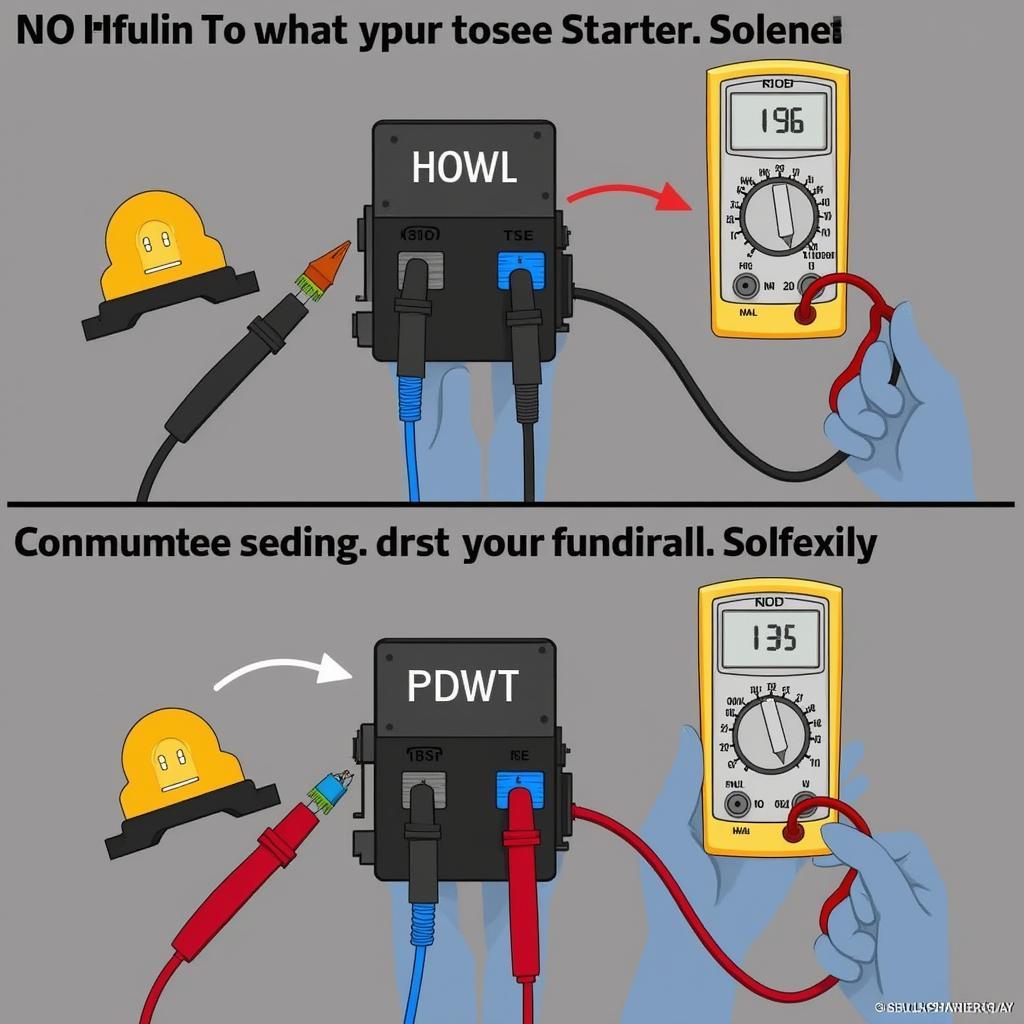Experiencing Problems With The Starter In Your Car can be frustrating, especially when you’re in a hurry. A faulty starter can leave you stranded, but understanding the common issues and troubleshooting steps can help you get back on the road quickly. This comprehensive guide will equip you with the knowledge to diagnose and potentially fix starter problems, saving you time and money.
If you’re experiencing automatic car starting problems, it’s crucial to identify the root cause. Sometimes, the issue might not even be with the starter itself. It could be a dead battery, corroded connections, or a faulty ignition switch. This guide will walk you through the process of identifying the culprit. Check out our guide on automatic car starting problems.
Common Starter Problems and Their Symptoms
A variety of issues can plague your car’s starter. These range from simple fixes like loose connections to more complex problems requiring professional attention. Recognizing the symptoms is the first step to effective troubleshooting.
- Clicking Sound: A single click when you turn the key often indicates a low battery or loose connection. Multiple clicks can suggest a failing starter solenoid.
- Grinding Noise: A grinding sound when the engine cranks is usually a sign of a damaged starter Bendix gear, which engages with the flywheel.
- Whining Noise: A high-pitched whine could point to a worn-out starter motor or a problem with the starter drive.
- No Response: When you turn the key and nothing happens, it could be a dead battery, a blown fuse, or a completely failed starter.
- Slow Cranking: A sluggish engine crank, especially in cold weather, could be caused by a weak battery or thickened engine oil. But, it can also be a symptom of a failing starter motor.
After diagnosing the symptoms, you can move to the next step, which is troubleshooting the issue. Check out our guide on ignition problem in car.
Troubleshooting Starter Problems
Before rushing to replace the starter, it’s wise to perform some basic troubleshooting. This can often save you unnecessary expense and time.
- Check the Battery: Ensure the battery terminals are clean and tight. A corroded connection can prevent sufficient power from reaching the starter. You can try jump-starting the car to see if a low battery charge is the culprit.
- Inspect the Wiring: Trace the wiring from the battery to the starter, looking for any loose, corroded, or damaged connections. Repair or replace any faulty wiring.
- Test the Starter Solenoid: A multimeter can be used to test the solenoid’s functionality. If the solenoid is faulty, it needs replacement.
- Tap the Starter: Sometimes, a gentle tap on the starter motor with a hammer can dislodge a stuck Bendix gear. This is a temporary fix and should be followed up with a proper inspection.
Is your car experiencing problems after a rainy day? We have a guide for you! Explore our resource on car engine problems when starting up after it rains.
 Testing Car Starter Solenoid
Testing Car Starter Solenoid
When to Replace Your Car Starter
If troubleshooting doesn’t resolve the problem, it’s likely time for a starter replacement. It’s often more cost-effective to replace the entire starter unit rather than individual components.
John Smith, a certified automotive technician with over 20 years of experience, advises, “While some starter components can be repaired individually, replacing the entire unit is often the best long-term solution. This eliminates the risk of further problems down the road.”
Several factors can contribute to starter failure. Age, extreme temperatures, and excessive use can all shorten a starter’s lifespan. Recognizing these factors can help you anticipate potential problems and take preventative measures. You can find more information on mars car starter problems.
 Replacing a Car Starter
Replacing a Car Starter
Preventing Future Starter Problems
Regular maintenance can significantly extend the life of your car’s starter and other electrical components.
- Keep Battery Connections Clean: Regularly clean the battery terminals with a wire brush and baking soda solution to prevent corrosion.
- Check Wiring: Periodically inspect the starter wiring for any signs of damage or wear.
- Avoid Frequent Short Trips: Short trips prevent the battery from fully recharging, which can strain the starter over time.
- Park in a Garage: Protecting your car from extreme temperatures can help prevent starter problems.
Maria Garcia, an electrical engineer specializing in automotive systems, emphasizes, “Regular battery maintenance is crucial for preventing starter issues. A healthy battery ensures the starter receives the necessary power to function correctly.” Have you considered checking for a starter in a car problem?
 Cleaning Car Battery Terminals
Cleaning Car Battery Terminals
Conclusion
Problems with the starter in your car can be inconvenient and frustrating. However, understanding the common symptoms and troubleshooting techniques can help you diagnose and address the issue effectively. Regular maintenance plays a vital role in preventing future starter problems and ensuring your car starts reliably every time. For further assistance or if you require professional help, don’t hesitate to contact us at AutoTipPro. Our phone number is +1 (641) 206-8880 and our office is located at 500 N St Mary’s St, San Antonio, TX 78205, United States.




Leave a Reply